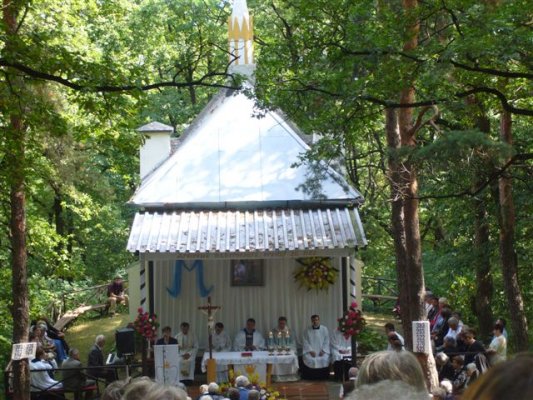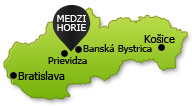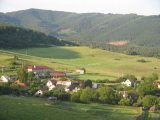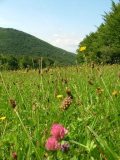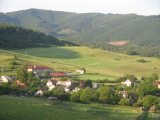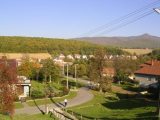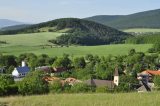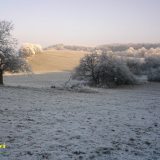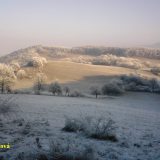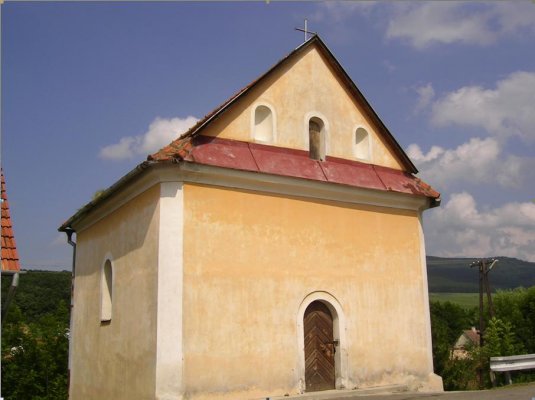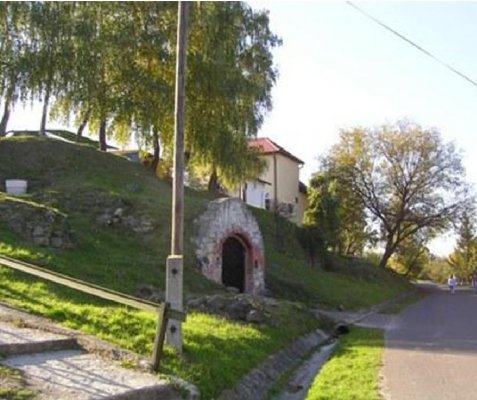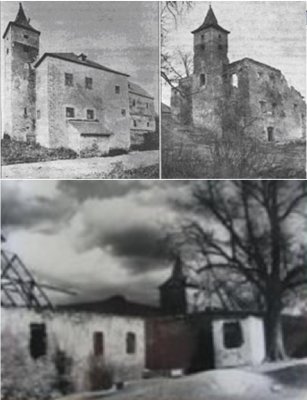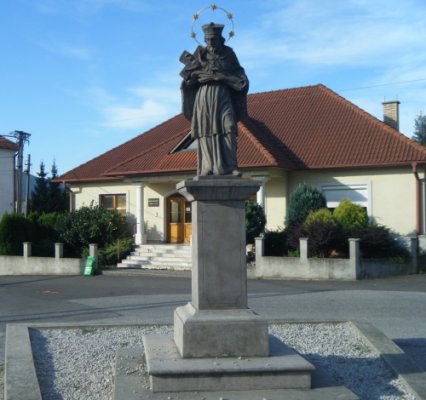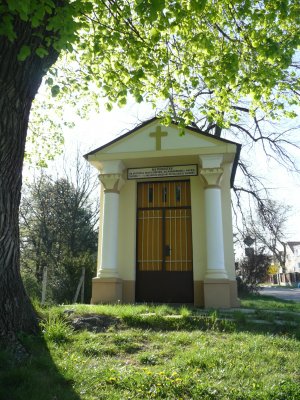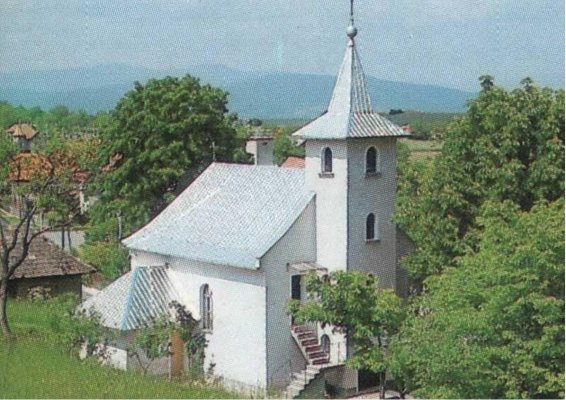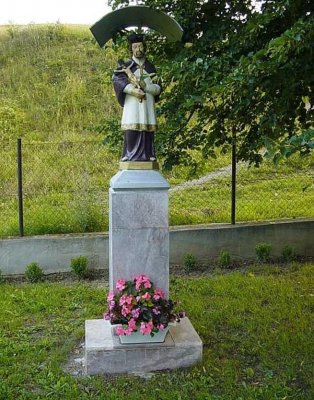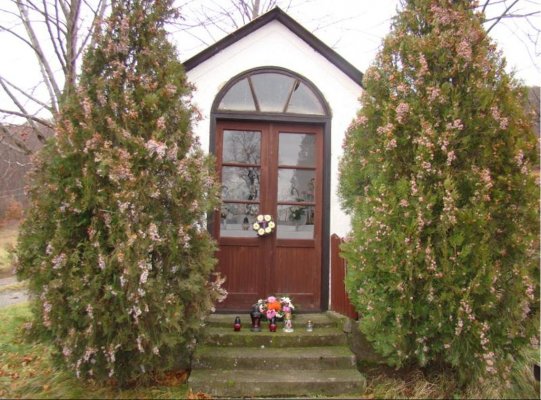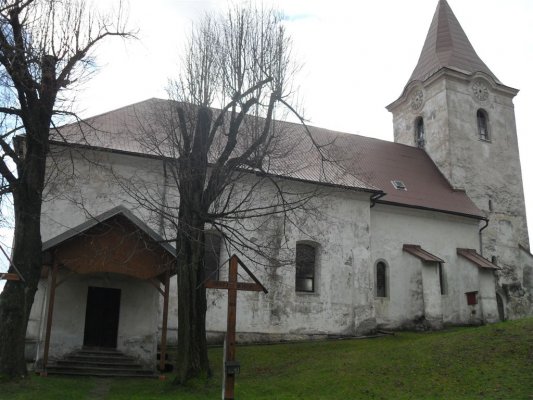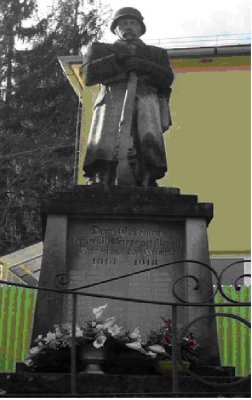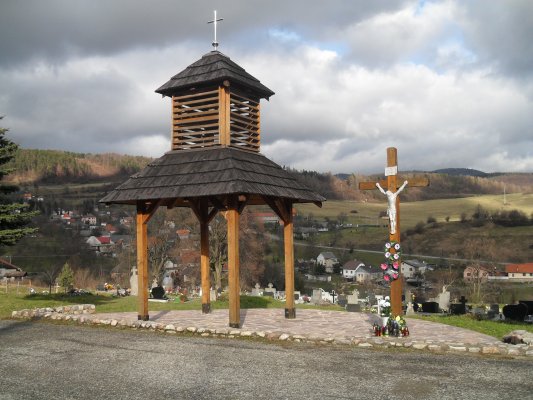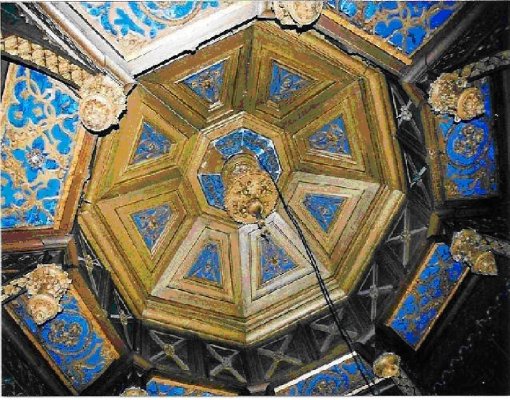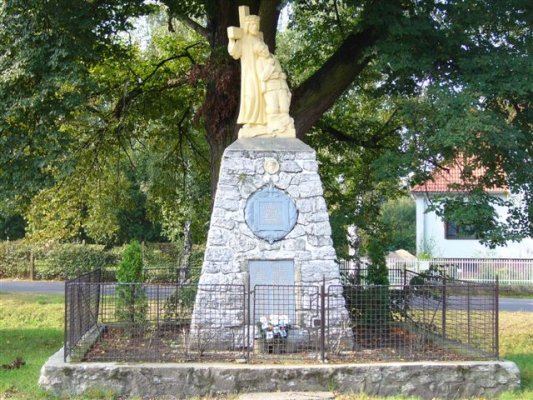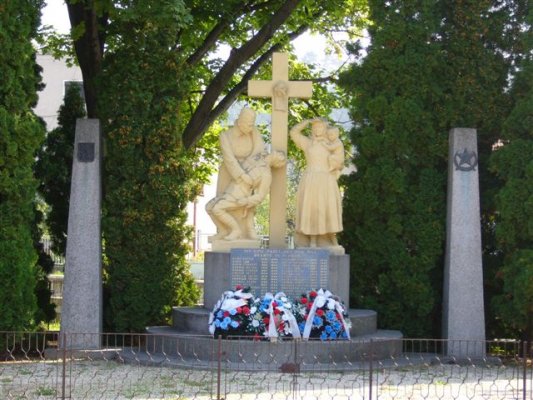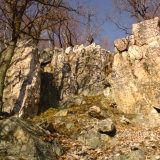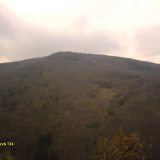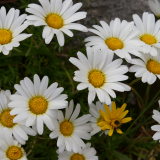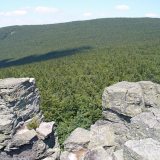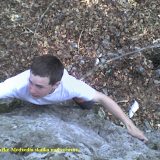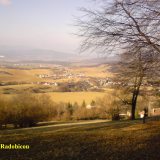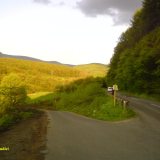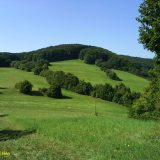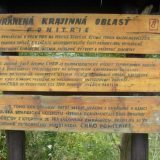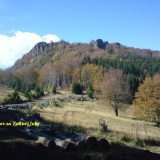Famous sights
HORNÁ VES
St. Paul's church
Among the cultural sights is the roman-catholic church built in 1837. Alexander Majthény and his wife had this church built in 1837.
Chapel of St. Vincent Ferrar
The village takes pride in the preserved chapel of St. Vincent Ferrar build in baroque style in 1780. The chapel is situated in the center of the village.
Manor house in Horná Ves
At present only the ruins of the fortification with a single preserved basement.
At the beginning of the 15th century the village owners, the family of Hunyady, built a fortified building of an early-medieval manor house. In the 16th century, the building was renewed in the late gothic style of a renaissance castle. During the second World War the castle was badly damaged and gradually devastated.
This extensive building consisted of three-storey single-tract building with an irregular ground plan, with a polygonal ledge on the south and with relatively high tower with a square ground floor plan directed towards the central axis of the building. On the left of the tower, there is a smaller flat buttress ending the eastern facade. In the southern wing of the building was a black kitchen with a hallway and fireplace above. In the welkin-arched tower was a chapel, whose interior modifications and furniture dated approximately back to 1749. The second-floor rooms were arched with vaults decorated with lunettes or cross with combs dating back to 1600 except a large room at the eastern side, which had late gothic timber ceiling with a bearer. The third-floor buildings were covered in wooden timber ceiling. In the atrium on the third floor was a renaissance fireplace made of color tiles from the 17th century. The western single-tract wing included representative rooms. Minor repairs were made in the manor house in the 19th century. During the second World War the manor house was badly damaged and gradually devastated.
The manor house before and after being burnt in the second World War and the historic photo of the manor house ruins.
In the 17th century this manor housed the chair congregation. This took place at the time when Ladislav Hunyady was the first district vice-adminstrator. The family of Hunyady at that time became the owner of the village realties and was closely related to the village itself. According to the portal registers, in 16th century the family of Majthény became the owners of land, in some periods referred to as the sole owners. They also owned the castle of Sivý Kameň. The preserved documents indicate that the family of Majthény and Hunyady disputed over the land ownership in the village. The documents from 1586 read that family of Majthény treated their cotters in a cruel manner. In 18th century the village made part of the system of the estate of the family of Majthény, whose center was represented by Sivý Kameň.
The last female owners of the former property of the Majthény family after the death of the father Rudolph Majthény, who was run down by a tram in Budapest in 1918 and was buried under the church in Čereňany, became his two daughters Maria Tarnoczy (maiden name Majthényi) and Gabriela Gostony (maiden name Majthényi). In 1923 the state took possession of their property.
OSLANY
The Church of St. Stephen the King
Among the cultural sights is a Roman-catholic church built in 1332 in gothic style and rebuilt in 1495. The church was reconstructed in the years 1756-1768 in the baroque style, which is the present image. The patron saint of the church is St. Stephen, the Hungarian king.
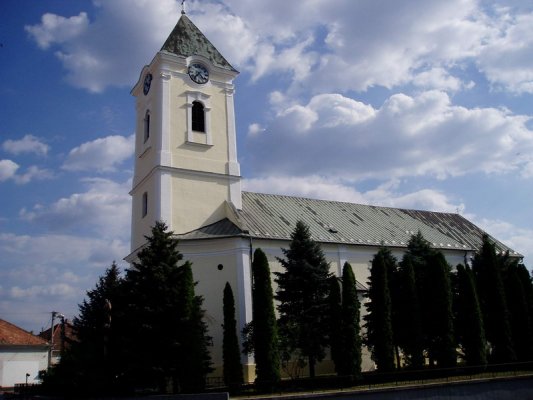
The Statue of St. Joseph's the 18th century
Near the church is the statue of St. Joseph's, which has been newly reconstructed.
The Chapel of St. Cyril and Metod
In 1923 a small chapel was built behind the center mill and replaced The Statue of Martyrdom on a stone pedestal. The chapel was built to commemorate the citizens who fought in the World War I from 1914-1918 (14 names). The chapel was named the Chapel of St. Cyril and Metod.
The Memorial of SNP
Out of secularly sights, one that is worth noting is the Memorial of SNP built in 1964.
Slovak double cross
In the jubilee year of 2000, the village took pride in building a 4-meter high and 4-meter wide double cross on the peak of Žarnova (840 m. a. s. l.).
RADOBICA
The Church of Godly Jesus's Heart
One of the cultural sights is the Roman-catholic originally built in 1950 and reconstructed in 2001.
The church before the reconstruction in 1994.
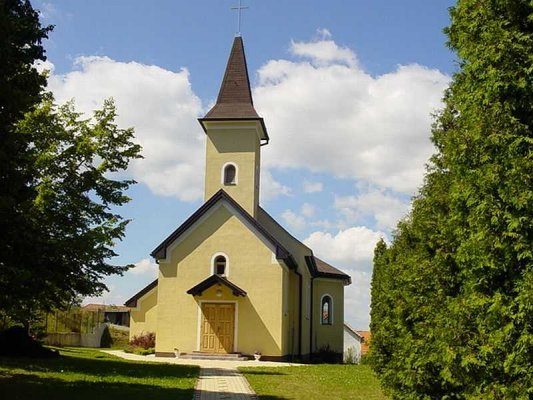
The church after reconstruction in 2002.
Near the church stands the statue of St. Ján Nepomucký, which has been reconstructed.
The chapel is 2.5 away from the village of Radobica and was built by the local citizen Ján Tomáš as a demonstration of gratitude for the return from the captivity during the World War II after 1945. The chapel is consecrated to the Virgin Mary.
VEĽKÉ POLE
Church
One of the cultural sights is the Roman-catholic church built in 1617 in the gothic style. The church has been consecrated to all saints. Before the church in 1972 a chapel was built to commemorate the big hail, which destroyed the whole village.
The Plague column
This statue was built in 1787 as a symbol of plague. This statue is referred to as the Plague column and is located in front of the cultural house in the village. The column has on it the dates of the last repairs after its reconstruction.
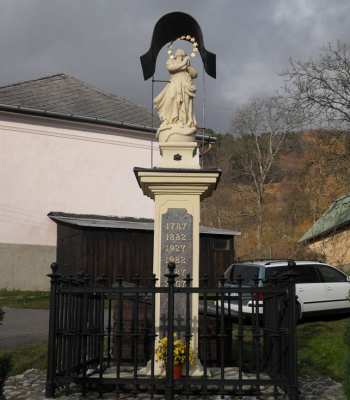
The Memorial of the fallen soldiers
What is worth mentioning when it comes to secularly sights is the Memorial of the fallen soldiers, which is placed in the center of the village. This memorial was built by German citizens living in Veľké Pole, because the village Veľké Pole was a German village and these German citizens were moved to Germany in 1946.
Among interesting objects ranks the oak belfry located in the local village cemetery. The belfry has a bell made by the village native Mr. Michal Trvalec.
VEĽKÉ UHERCE
The Church of St. Michael Archangel
The church was built in 1332 in the gothic style on older basements. It was rebuilt in renaissance style in 1669, when a side chapel was built to the church. A single-nave building with a polygonal seal of the presbyterium and reconstructed tower.
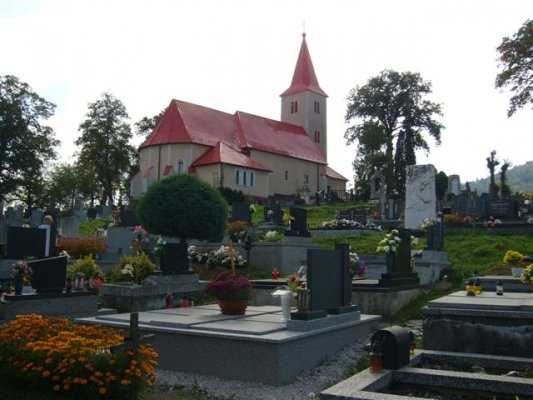
The Manor House
One of the dominant features of the village is the manor house built in 1622 by the order of Michal Bošány and his wife Margaréta during the Turkish invasion. The manor house was originally built as a renaissance building, but was rebuilt in baroque style in the 18th century. In 1860 it was completely rebuilt in romantic-neogothic style with the preservation of the part of the ground floor rooms.
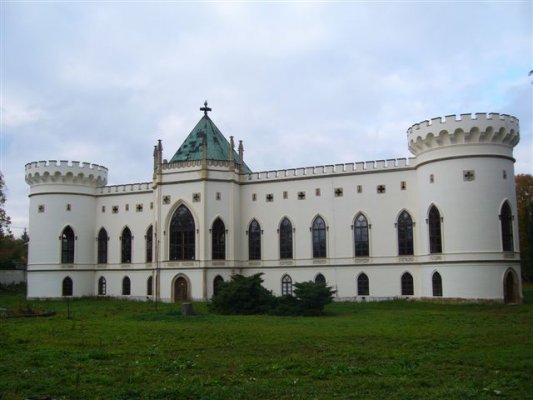
It is a 4-wing building built around a rectangular arcade yard with towers on the corners. The facade of the building is segmented by neogothic architectural elements. The double-tract ground floor has a neogothic chapel and richly decorated portal. On the second floor there are representative rooms with wooden facing and prototypal parquet. The romantic knight hall with busts of knights on the walls.
In the interior, the tapestry placed in the ceremonial hall represents the king sitting on the throne and surrounded by a large number of figures. The relief portrait of the barone Thonet is from 1904 by P. Breithut. The rococo style frame comes from the second third of the 18th century.
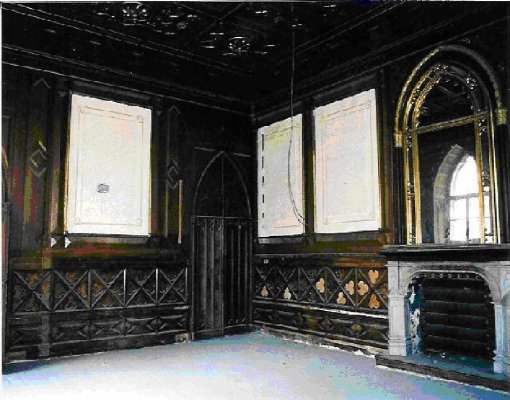
In 1865 the manor house was purchased by the family of Thonet, which owned the house until the end of the World War II. At present the manor house is owned by one of the descendants of the family of Thonet. Nowadays, it is inaccessible to the general public due to reconstruction.
Web : http://translate.google.sk/translate?js=n&prev=_t&hl=sk&ie=UTF-8&layout=2&eotf=1&sl=sk&tl=en&u=www.zamky.sk%2Fkastiele-a-kurie%2Fvelke-uherce-kastiel%3Fq%3Dnode%2F3%26mon%3D305276%26det%3D1
The Chapel of Virgin Mary
The chapel is located at the entrance into the village and is built in the form of a garden pavillion. At the top you can see the plastic art of piety from the beginning of the 19th century. The bell is from 1837 and was made by V. Littman.
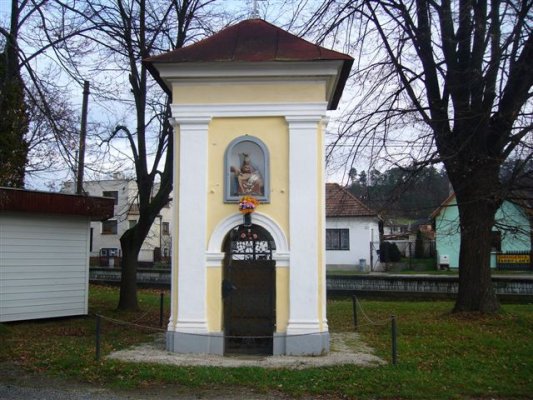
The Memorial for the fallen in the World War I
The memorial is situated in the center of the village opposite the post office. It was built to the memory of soldiers who fell in the first World War. On the rock pedestal is the sculpture of Jesus Christ with a cross and a soldier. The pedestal bears a list of fallen soldiers and the names of the author and people for whom the memorial was built.
The Memorial for the fallen in the World War II
The Memorial is located next to the fire station to the memory of fallen partisans who fought during SNP. The semicircular pedestal holds a sculpture of three figures made of sandstone with a cross in the background. The memorial has on it the names of 36 fallen soldiers.
The Chapel on the Calvary
The Chapel is situated on the slope of the mountain Šípok and was built in 1850. It was ordered to be built by the baroness Kristína Hellenbach Rudnay as an expression of graditude for the recovery of her husband thanks to the use of medicinal herbs, which she picked at the place of the chapel. In 1852 the chapel was consecrated by the bischop from Banská Bystrica Štefan Moyzes and was devoted to Ascended Virgin Mary. The stations of the Way of the cross were built to the chapel soon after. There is a pilgrimage of believers from the surroundings to celebrate the ascension of Virgin Mary (15th august).
